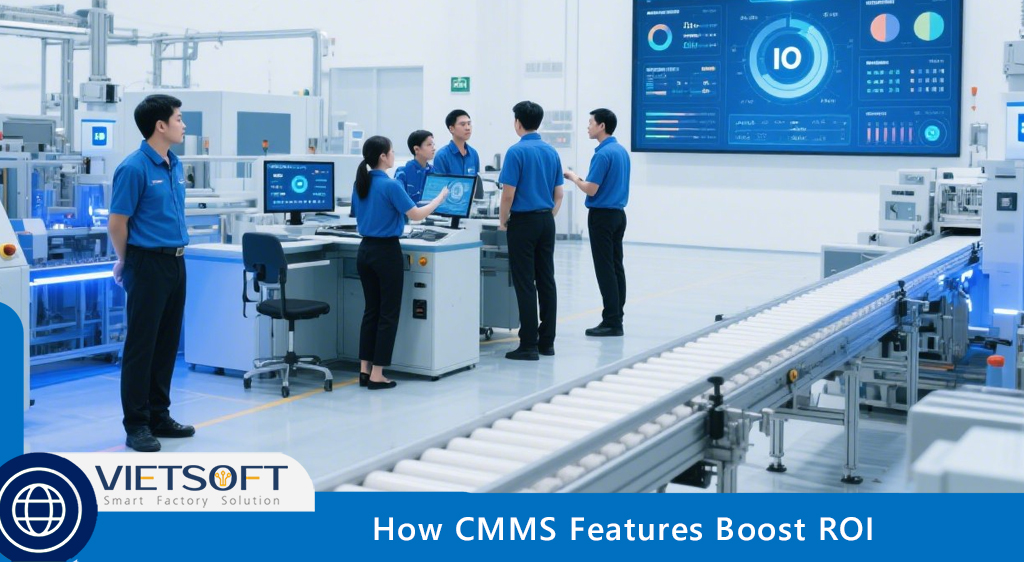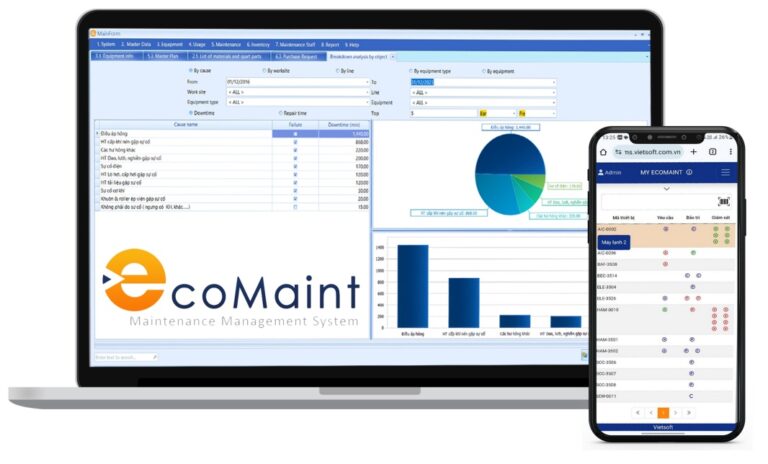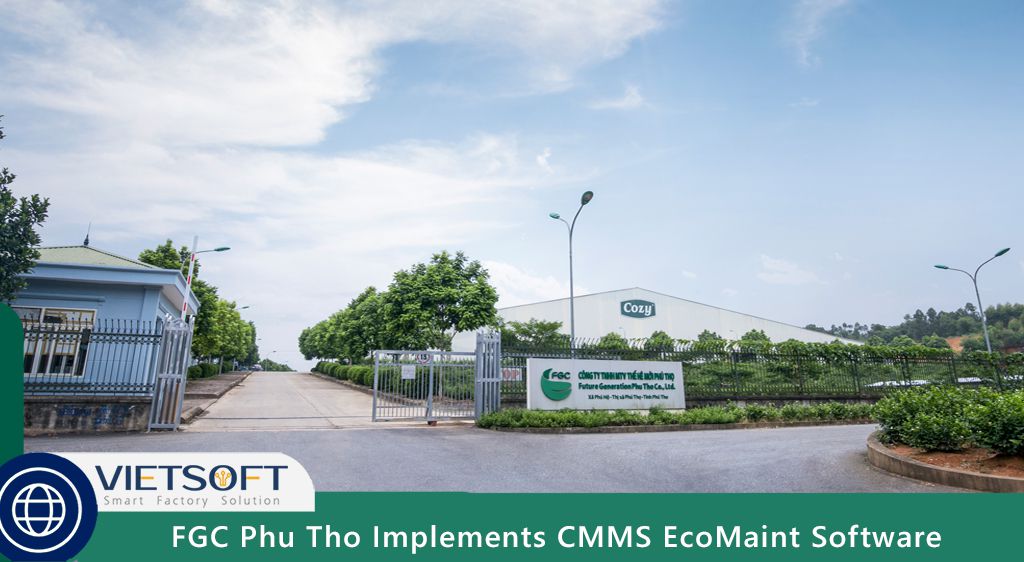
In today’s fast-paced industrial landscape, optimizing maintenance operations is critical for businesses aiming to stay competitive. A Computerized Maintenance Management System (CMMS) is a powerful tool that streamlines maintenance processes, reduces costs, and significantly enhances Return on Investment (ROI). With over 20 years of experience in industrial maintenance, I’ve seen firsthand how the right CMMS features can transform operations and deliver measurable financial returns. This article explores the concept of CMMS, the role of ROI in maintenance, and the key features that boost ROI while providing actionable insights for maintenance professionals.
I. What is a CMMS and Why Does It Matter?
A Computerized Maintenance Management System (CMMS) is a digital platform designed to centralize and optimize maintenance activities. It replaces outdated manual processes—such as paper logs, scattered spreadsheets, or disconnected emails—with a unified system for managing assets, work orders, inventory, and maintenance schedules. By providing real-time visibility into operations, a CMMS empowers teams to make data-driven decisions, improve efficiency, and reduce downtime.
II. Why CMMS is Essential for Modern Maintenance
Maintenance teams face constant pressure to minimize downtime, control costs, and ensure regulatory compliance. A CMMS addresses these challenges by:
- Centralizing Data: Consolidates asset histories, work orders, and inventory records into a single source of truth.
- Streamlining Workflows: Automates task assignments, scheduling, and reporting to eliminate inefficiencies.
- Enhancing Decision-Making: Provides actionable insights through real-time data and analytics.
For businesses in asset-heavy industries like manufacturing, logistics, or energy, a CMMS is not just a tool—it’s a strategic investment that directly impacts the bottom line by boosting ROI.
III. Understanding ROI in Maintenance Operations
Return on Investment (ROI) in maintenance measures the financial benefits gained from maintenance activities relative to their costs. It’s a critical metric for justifying investments in tools like CMMS, as it quantifies how effectively resources are used to improve operational efficiency and reduce losses.
IV. Calculating Maintenance ROI
ROI is typically calculated using the following formula:
ROI (%) = [(Financial Gains from Maintenance – Maintenance Costs) / Maintenance Costs] x 100
For example, if a company spends $50,000 annually on maintenance (including labor, parts, and software) and achieves $150,000 in savings through reduced downtime and improved efficiency, the ROI would be:
ROI = [($150,000 – $50,000) / $50,000] x 100 = 200%
This means the company earns $2 in benefits for every $1 spent on maintenance—a clear indicator of a high-performing maintenance strategy.
Factors Influencing Maintenance ROI
Several factors impact maintenance ROI, including:
- Downtime Costs: Unplanned downtime can cost thousands to millions per hour, depending on the industry.
- Labor Efficiency: Inefficient labor utilization, such as overtime or misallocated tasks, erodes profitability.
- Asset Longevity: Poor maintenance shortens equipment life, increasing replacement costs.
- Inventory Management: Stockouts or overstocked parts tie up capital and disrupt operations.
- Regulatory Compliance: Non-compliance can lead to fines or operational shutdowns.
A well-implemented CMMS addresses these factors by optimizing processes and providing data to drive smarter decisions, ultimately boosting ROI.
V. Key CMMS Features That Boost ROI
The right CMMS features can transform maintenance operations by addressing pain points and unlocking efficiencies. Below, we explore eight powerful features that directly contribute to boosting ROI, drawing on industry best practices and real-world applications.
1. Intuitive User Interface for Seamless Adoption
A CMMS with an intuitive interface ensures technicians can quickly learn and use the system without frustration. Complex software often leads to low adoption rates, undermining ROI. A user-friendly CMMS, like EcoMaint, allows technicians to:
- Search for parts or close work orders in just a few clicks.
- Navigate the system as easily as they do their favorite mobile apps.
Why It Boosts ROI: High adoption rates lead to consistent data entry, better decision-making, and faster task completion, reducing labor costs and downtime.
2. Mobile-First Design for On-the-Go Productivity
Maintenance technicians rarely work at a desk, so a CMMS must prioritize mobile accessibility. A mobile-first CMMS enables:
- Real-time updates from the shop floor.
- Access to work orders, asset histories, and manuals on smartphones or tablets.
- Features like photo uploads or voice notes for quick documentation.
For example, a technician can photograph a faulty machine, attach the image to a work order, and request parts instantly, eliminating delays.
Why It Boosts ROI: Mobile access improves data accuracy and reduces response times, minimizing downtime costs and enhancing labor efficiency.
3. Simplified Data Entry for High-Quality Insights
Quality data is the backbone of effective maintenance. A CMMS that simplifies data entry—through features like barcode scanning, QR codes, or pre-filled templates—ensures technicians can log accurate information quickly. For instance, scanning a QR code on a machine can instantly pull up its maintenance history, reducing errors.
Why It Boosts ROI: Accurate data enables better forecasting, preventive maintenance planning, and KPI tracking, leading to cost savings and improved asset reliability.
4. Robust Implementation and Support Services
Successful CMMS implementation requires expert guidance to ensure proper setup, data migration, and user training. Vendors offering dedicated support, like Vietsoft with EcoMaint, help:
- Migrate historical data accurately.
- Train teams on best practices.
- Provide ongoing support to address challenges.
Why It Boosts ROI: Strong implementation drives user adoption, minimizes disruptions, and accelerates the time to value, ensuring faster ROI realization.
5. AI-Powered Automation for Smarter Workflows
Artificial Intelligence (AI) is revolutionizing maintenance by automating repetitive tasks and predicting issues. AI-powered CMMS features can:
- Generate standardized workflows in minutes.
- Predict equipment failures based on historical data.
- Recommend optimal maintenance schedules.
For example, AI can analyze sensor data to predict when a motor is likely to fail, allowing technicians to intervene before costly downtime occurs.
Why It Boosts ROI: AI reduces manual effort, improves maintenance precision, and extends asset life, directly impacting cost savings and productivity.
6. Multi-Site Management for Consistent Operations
For businesses with multiple facilities, standardizing maintenance processes across sites is a challenge. A CMMS with multi-site management features enables:
- Centralized oversight of assets and work orders.
- Consistent procedures across locations.
- Knowledge sharing to replicate best practices.
For instance, a manufacturing company using EcoMaint can ensure all sites follow the same preventive maintenance protocols, reducing variability and improving efficiency.
Why It Boosts ROI: Standardized processes reduce errors, enhance predictability, and lower operational costs across multiple locations.
7. Flexible Integrations for a Connected Ecosystem
A CMMS that integrates with other systems—such as ERP, IoT devices, or MES—creates a seamless flow of data. For example:
- IoT integration enables real-time condition monitoring.
- ERP connectivity aligns maintenance with financial planning.
- MES integration optimizes production scheduling.
Why It Boosts ROI: Integration eliminates data silos, enables predictive maintenance, and provides a holistic view of operations, reducing costs and improving decision-making.
8. Advanced Reporting and Analytics for Strategic Decisions
Powerful reporting tools are essential for tracking KPIs like Mean Time to Repair (MTTR), Mean Time Between Failures (MTBF), and maintenance costs. A CMMS with customizable dashboards allows:
- Real-time monitoring of asset performance.
- Identification of trends and inefficiencies.
- Forecasting of maintenance budgets.
For example, a maintenance manager can use a CMMS dashboard to identify a machine with frequent breakdowns, prioritize its repair, and avoid costly downtime.
Why It Boosts ROI: Data-driven insights enable proactive maintenance, reduce unnecessary expenses, and optimize resource allocation.
VI. Additional Ways CMMS Enhances ROI
Beyond the core features, a CMMS delivers ROI through strategic improvements in maintenance operations. Here are four additional ways a CMMS drives financial returns:
1. Reducing Equipment Downtime
Unplanned downtime is a major cost driver. According to industry studies, manufacturers lose an average of 800 hours annually to unplanned downtime, costing $17,000 per incident on average. A CMMS reduces downtime by:
- Scheduling preventive maintenance based on usage or condition triggers.
- Tracking asset performance to identify potential issues early.
- Providing real-time alerts for critical failures.
For example, a CMMS can notify technicians when a machine’s vibration levels exceed normal thresholds, preventing a catastrophic failure.
2. Optimizing Labor Utilization
Labor costs can spiral due to inefficiencies like overtime or misallocated tasks. A CMMS improves labor utilization by:
- Automating work order assignments based on technician availability and skills.
- Providing mobile access to reduce time spent on administrative tasks.
- Tracking labor hours to identify inefficiencies.
For instance, a technician can complete a work order on-site and instantly update its status, saving hours of manual reporting.
3. Extending Asset Life
Preventive and predictive maintenance strategies enabled by a CMMS extend equipment life. By tracking usage metrics like operational hours or meter readings, a CMMS helps:
- Schedule maintenance at optimal intervals.
- Identify patterns of wear and tear.
- Reduce the need for costly replacements.
A study found that predictive maintenance can yield a tenfold ROI by reducing repair costs and extending asset life by 30–40%.
4. Modernizing Inventory Management
Effective inventory management prevents stockouts and overstocking, both of which impact ROI. A CMMS optimizes inventory by:
- Automating purchase orders based on real-time stock levels.
- Tracking part usage and storage locations.
- Providing visibility into inventory costs.
For example, a technician can scan a part’s barcode to check its availability, ensuring repairs are completed without delays.
VII. How EcoMaint by Vietsoft Boosts ROI
For businesses in Vietnam seeking a tailored CMMS solution, EcoMaint by Vietsoft offers a robust platform designed to boost ROI through intuitive features and seamless implementation. EcoMaint empowers maintenance teams with:
- A mobile-first interface for real-time updates from the shop floor.
- AI-driven analytics to predict failures and optimize schedules.
- Multi-site management tools for consistent operations across facilities.
- Flexible integrations with ERP and IoT systems for a connected ecosystem.
Vietsoft’s dedicated support ensures a smooth rollout, with expert training and data migration tailored to your needs. By aligning with industry best practices, EcoMaint helps businesses reduce downtime, optimize labor, and extend asset life, delivering measurable financial returns. Curious about how EcoMaint can transform your maintenance operations? Discover CMMS EcoMaint here.
Contact us via hotline: 0986778578 or email: sales@vietsoft.com.vn.
VIII. Best Practices for Maximizing CMMS ROI
To fully leverage a CMMS and boost ROI, maintenance teams must adopt best practices that ensure long-term success. Here are key strategies:
1. Secure Organization-Wide Buy-In
CMMS success requires collaboration across departments. Engage operations, procurement, and leadership to define roles and ensure accountability. For example, procurement can use CMMS data to optimize part orders, while leadership can leverage reports for strategic planning.
2. Prioritize Mobile Adoption
Encourage technicians to use mobile features for real-time updates. This ensures data accuracy and reduces reliance on memory or manual logs.
3. Maintain Accurate Data
Assign “product champions” to oversee data quality. These team members can flag inconsistencies and ensure the CMMS remains a reliable source of truth.
4. Develop a Dynamic Maintenance Schedule
Build schedules based on asset criticality and real-time data. Regularly review and adjust plans to reflect operational changes.
5. Invest in Continuous Training
Ongoing training ensures teams stay proficient with the CMMS. Role-specific training for technicians, supervisors, and managers maximizes system utilization.
IX. Conclusion: Unlocking ROI with CMMS
A well-implemented CMMS is a game-changer for maintenance operations, delivering significant cost savings and operational efficiencies. By leveraging features like intuitive interfaces, mobile access, AI automation, and advanced analytics, businesses can boost ROI by reducing downtime, optimizing labor, extending asset life, and improving inventory management. Solutions like EcoMaint by Vietsoft take this further by offering tailored features and expert support to meet the unique needs of Vietnamese businesses.




